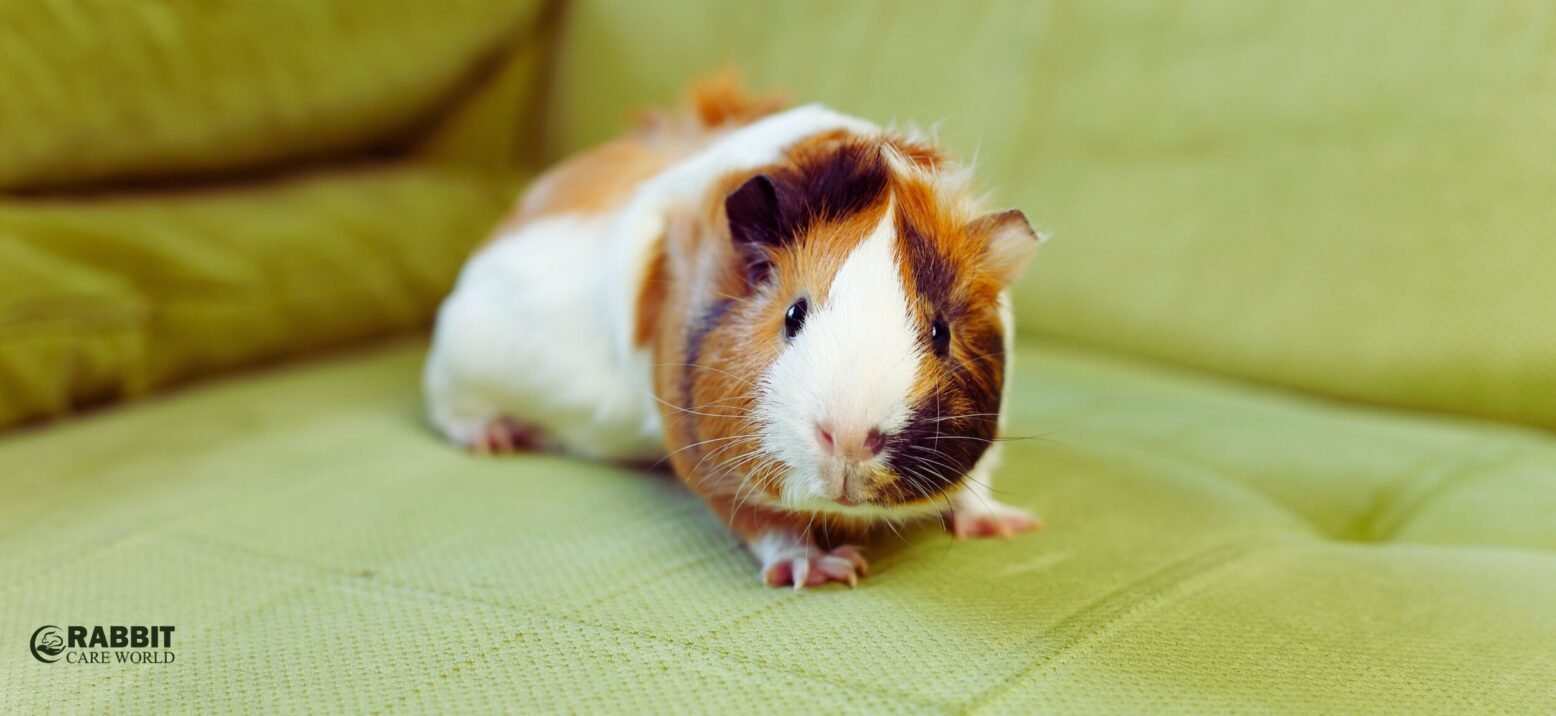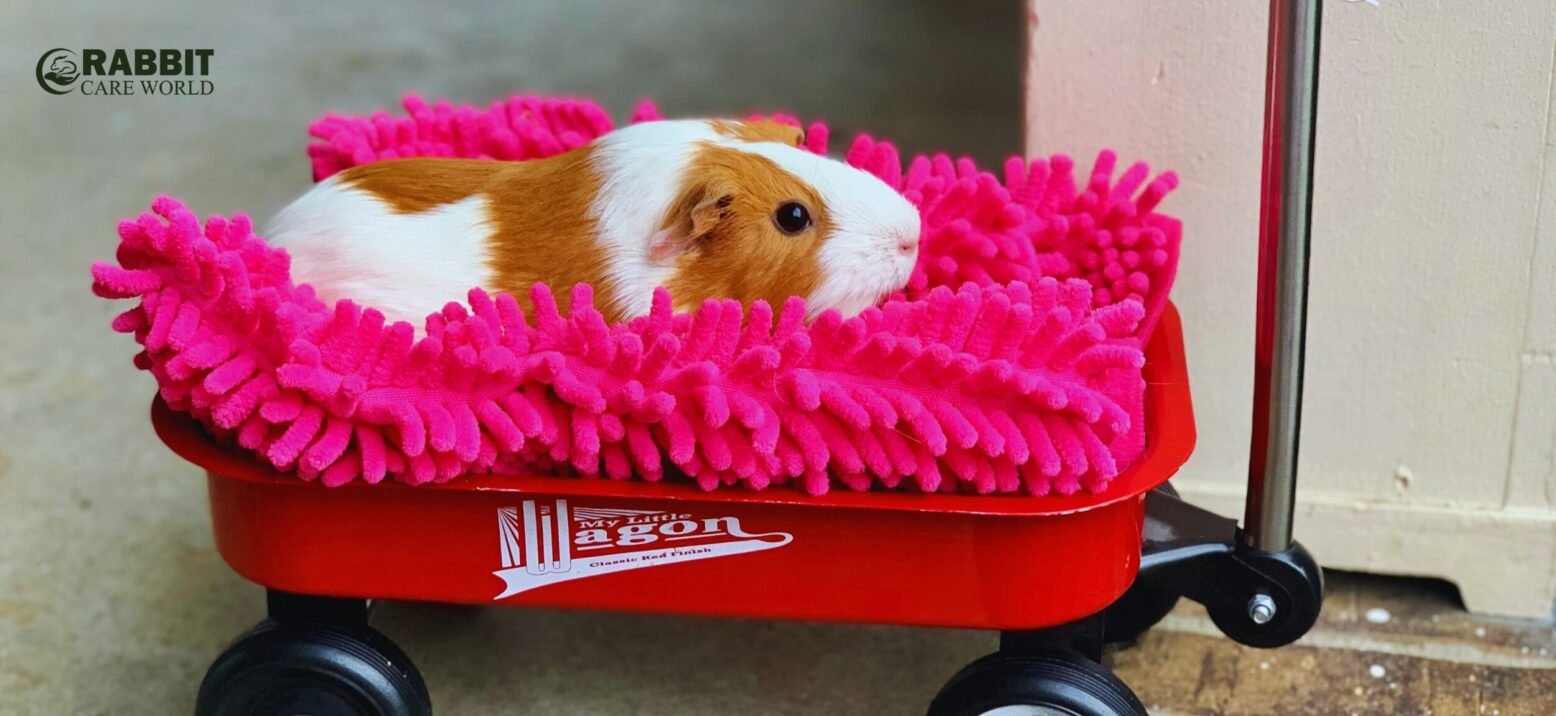The Teddy Bear Guinea Pig is a popular pet choice for many. Known for its soft, plush fur and endearing personality, this breed of guinea pig offers a unique and rewarding pet ownership experience.
This guide will explore everything you need to know about Teddy Bear Guinea Pigs, from their history and characteristics to detailed care instructions, ensuring your pet remains healthy and happy.
Explore Our Latest 150+ Cute & Beautiful Guinea Pig Names Blog.
Table of Contents
Toggle1. History and Origin of the Teddy Bear Guinea Pig

The Teddy Bear Guinea Pig, also known as the Teddy Guinea Pig, is a relatively modern breed that emerged through selective breeding to enhance specific physical traits. These guinea pigs are named for their soft, plush fur, reminiscent of a teddy bear. The breed was officially recognized in the 1960s and has since become a beloved pet due to its adorable appearance and friendly demeanor.
2. Physical Characteristics
Teddy Bear Guinea Pigs are distinguished by their short, dense, and plush fur that stands on end, giving them a fluffy and cuddly look. They typically weigh between 1.5 to 2.5 pounds and measure around 8 to 10 inches in length. Their fur can come in a variety of colors and patterns, and they have a broad, round face with bright, expressive eyes.
3. Personality and Temperament
Teddy Guinea Pigs are known for their gentle and affectionate nature. They are social animals that thrive on interaction with their human companions and other guinea pigs. Their docile temperament makes them ideal pets for families and children. They enjoy being handled and can become quite attached to their owners, often showing excitement when they see them.
4. Housing and Environment Requirements

Providing a suitable habitat for your Teddy Bear Guinea Pig is crucial for their well-being. Here are some key considerations:
- Cage Size: A spacious cage is essential. A minimum of 7.5 square feet is recommended for a single guinea pig, with additional space needed for multiple pets.
- Bedding: Use soft, absorbent bedding such as aspen shavings, paper bedding, or fleece liners to ensure comfort and cleanliness.
- Hideouts: Provide hideouts and shelters where your guinea pig can retreat and feel secure.
- Temperature: Maintain a stable temperature between 65-75°F, avoiding extreme heat or cold.
- Lighting: Ensure the cage is placed in a well-lit area but away from direct sunlight.
5. Diet and Nutrition
A balanced diet is vital for the health of your Teddy Bear Guinea Pig. Their diet should include:
- Hay: Fresh hay should be the staple of their diet, aiding digestion and dental health.
- Vegetables: Provide a variety of fresh vegetables daily, such as bell peppers, cucumbers, and leafy greens.
- Pellets: Offer high-quality guinea pig pellets fortified with vitamin C.
- Water: Ensure a constant supply of clean, fresh water.
6. Grooming and Maintenance
Despite their plush fur, Teddy Bear Guinea Pigs are relatively low-maintenance. Regular grooming includes:
- Brushing: Brush their fur once or twice a week to remove loose hair and prevent matting.
- Nail Trimming: Trim their nails monthly to prevent overgrowth and discomfort.
- Bathing: Only bathe when necessary, as frequent baths can dry out their skin. Use a gentle, pet-safe shampoo.
7. Health and Common Ailments
Teddy Bear Guinea Pigs are generally healthy pets but can be prone to certain conditions:
- Respiratory Infections: Ensure their environment is clean and free from drafts to prevent respiratory issues.
- Scurvy: Due to their inability to produce vitamin C, a deficiency can lead to scurvy. Provide vitamin C-rich foods or supplements.
- Dental Problems: Overgrown teeth can cause eating difficulties. Regularly provide hay and chew toys to promote dental health.
- Skin Issues: Monitor for signs of mites or fungal infections, which require veterinary attention.
8. Breeding and Lifespan
Breeding Teddy Bear Guinea Pigs should be approached with caution and responsibility. They typically have a lifespan of 4-7 years, with proper care extending their longevity. Breeding should only be done by experienced individuals to ensure the health and welfare of both the parents and the offspring.
9. Social Behavior and Interaction
Teddy Bear Guinea Pigs are highly social and benefit from the companionship of other guinea pigs. They communicate through a variety of sounds, including purring, chirping, and squeaking. Regular interaction with their human owners helps build a strong bond and ensures a happy, well-adjusted pet.
10. Training and Enrichment Activities
While guinea pigs cannot be trained like dogs, they can learn simple tricks and respond to their names with positive reinforcement. Enrichment activities such as tunnels, chew toys, and interactive playtime are essential for their mental and physical stimulation.
11. Teddy Bear Guinea Pig in Popular Culture
The Teddy Bear Guinea Pig has made appearances in various media, endearing itself to a broader audience. Their cute and cuddly image has been featured in children’s books, TV shows, and even social media platforms, where pet owners share their adorable moments.
12. The Emotional Bond with Your Pet
Developing a close emotional bond with your Teddy Bear Guinea Pig can be incredibly rewarding. They are sensitive to their owner’s emotions and can provide comfort and companionship. Spending time with your guinea pig, talking to them, and gently handling them can enhance this bond.
13. Adopting a Teddy Bear Guinea Pig
When considering adopting a Teddy Bear Guinea Pig, it’s important to choose a reputable breeder or rescue organization. Ensure the pet is healthy and has been well cared for. Adoption not only gives a pet a loving home but also supports ethical breeding practices.
14. Cost and Budgeting for a Guinea Pig
Owning a Teddy Bear Guinea Pig involves initial and ongoing costs. Budget for expenses such as:
- Initial Setup: Cage, bedding, food, and initial veterinary check-up.
- Monthly Costs: Food, bedding, and occasional health care.
- Miscellaneous: Toys, grooming supplies, and unexpected veterinary bills.
Final Thoughts:
The Teddy Bear Guinea Pig is an endearing and delightful pet, perfect for families and individuals alike. With proper care, nutrition, and a loving environment, these furry friends can bring immense joy and companionship into your life. By understanding their needs and behaviors, you can ensure a long, healthy, and happy life for your Teddy Bear Guinea Pig.
Frequently Asked Questions (FAQs)
1. How often should I clean my Teddy Bear Guinea Pig’s cage?
Clean the cage at least once a week, replacing bedding and ensuring all surfaces are sanitized.
2. What vegetables are safe for my guinea pig?
Safe vegetables include bell peppers, cucumbers, carrots, and leafy greens like kale and spinach.
3. Can Teddy Bear Guinea Pigs live alone?
While they can live alone, they thrive better with a companion guinea pig due to their social nature.
4. How can I tell if my guinea pig is healthy?
A healthy guinea pig will be active, have bright eyes, a shiny coat, and a good appetite. Regular veterinary check-ups are also recommended.
5. What should I do if my guinea pig shows signs of illness?
Seek veterinary care immediately if you notice symptoms like lethargy, loss of appetite, or unusual discharge.
6. Are Teddy Bear Guinea Pigs good pets for children?
Yes, they are excellent pets for children due to their gentle nature, but children should be supervised during interactions.
7. How much exercise does a Teddy Bear Guinea Pig need?
They need daily exercise outside their cage. Provide a safe, enclosed area for them to explore and play.
8. Do guinea pigs need to be spayed or neutered?
Spaying or neutering is not commonly done but can be beneficial in some cases to prevent breeding and reduce certain health risks.
9. What is the best type of bedding for my guinea pig?
Aspen shavings, paper bedding, and fleece liners are great options. Avoid cedar and pine shavings due to their harmful effects.
10. How can I bond with my Teddy Bear Guinea Pig?
Spend time with them daily, handle them gently, talk to them softly, and offer treats to build trust and affection.



